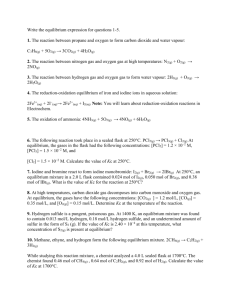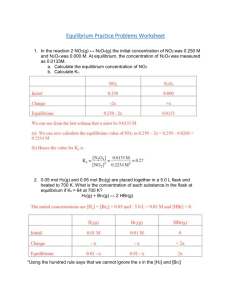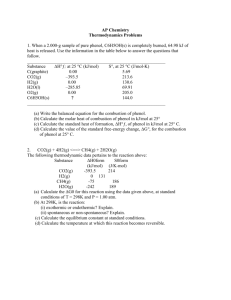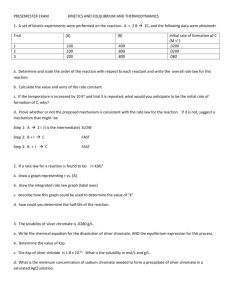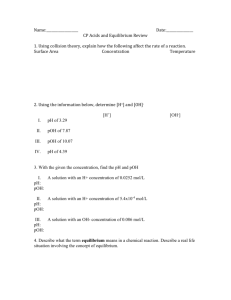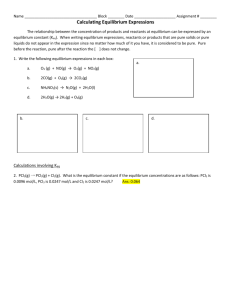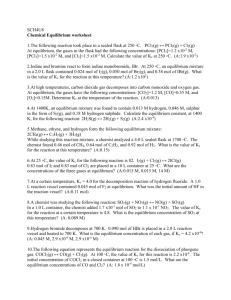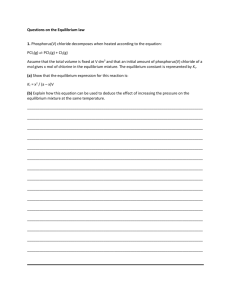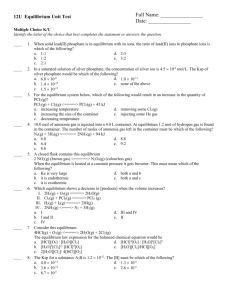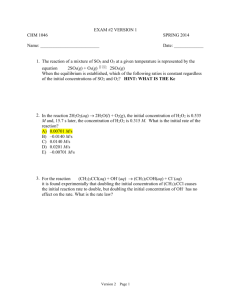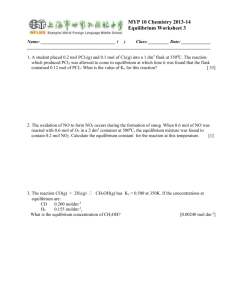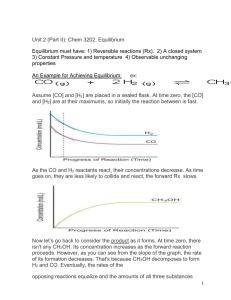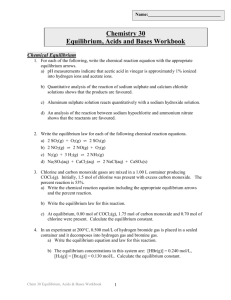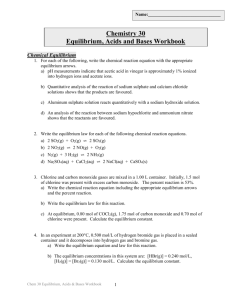Ch. 16 Test Review Review all notes and definitions. Write the
advertisement
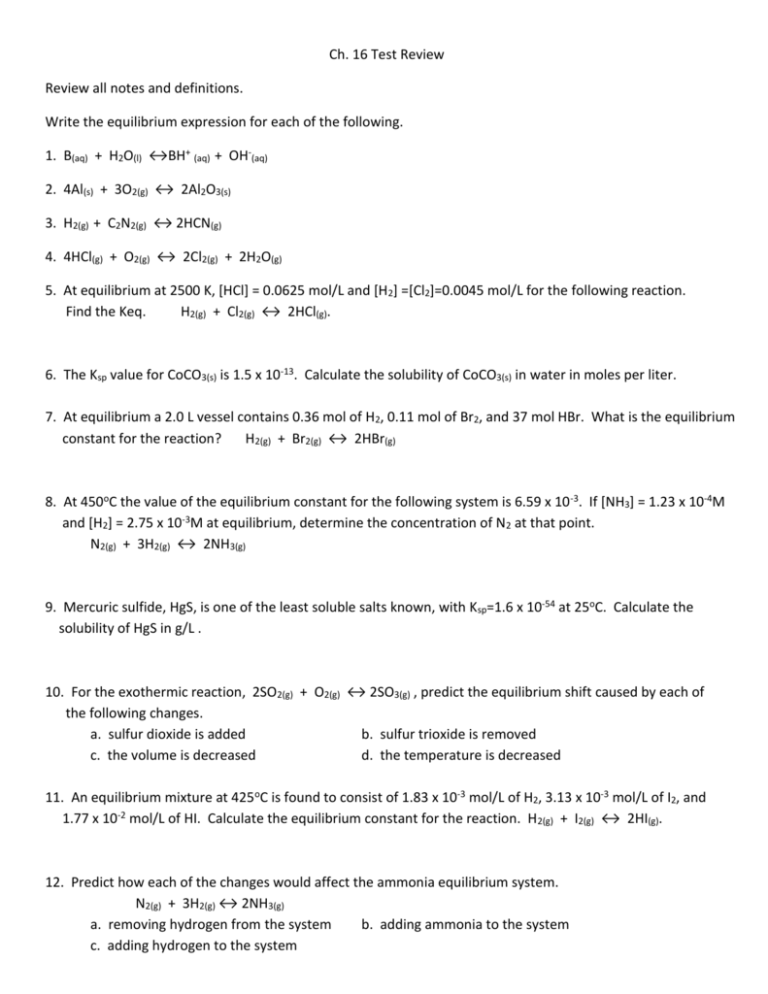
Ch. 16 Test Review Review all notes and definitions. Write the equilibrium expression for each of the following. 1. B(aq) + H2O(l) ↔BH+ (aq) + OH-(aq) 2. 4Al(s) + 3O2(g) ↔ 2Al2O3(s) 3. H2(g) + C2N2(g) ↔ 2HCN(g) 4. 4HCl(g) + O2(g) ↔ 2Cl2(g) + 2H2O(g) 5. At equilibrium at 2500 K, [HCl] = 0.0625 mol/L and [H2] =[Cl2]=0.0045 mol/L for the following reaction. Find the Keq. H2(g) + Cl2(g) ↔ 2HCl(g). 6. The Ksp value for CoCO3(s) is 1.5 x 10-13. Calculate the solubility of CoCO3(s) in water in moles per liter. 7. At equilibrium a 2.0 L vessel contains 0.36 mol of H2, 0.11 mol of Br2, and 37 mol HBr. What is the equilibrium constant for the reaction? H2(g) + Br2(g) ↔ 2HBr(g) 8. At 450oC the value of the equilibrium constant for the following system is 6.59 x 10 -3. If [NH3] = 1.23 x 10-4M and [H2] = 2.75 x 10-3M at equilibrium, determine the concentration of N2 at that point. N2(g) + 3H2(g) ↔ 2NH3(g) 9. Mercuric sulfide, HgS, is one of the least soluble salts known, with Ksp=1.6 x 10-54 at 25oC. Calculate the solubility of HgS in g/L . 10. For the exothermic reaction, 2SO2(g) + O2(g) ↔ 2SO3(g) , predict the equilibrium shift caused by each of the following changes. a. sulfur dioxide is added b. sulfur trioxide is removed c. the volume is decreased d. the temperature is decreased 11. An equilibrium mixture at 425oC is found to consist of 1.83 x 10-3 mol/L of H2, 3.13 x 10-3 mol/L of I2, and 1.77 x 10-2 mol/L of HI. Calculate the equilibrium constant for the reaction. H2(g) + I2(g) ↔ 2HI(g). 12. Predict how each of the changes would affect the ammonia equilibrium system. N2(g) + 3H2(g) ↔ 2NH3(g) a. removing hydrogen from the system b. adding ammonia to the system c. adding hydrogen to the system 13. Write a balanced equation and the Ksp expression for the dissolving of solid chromium (III) hydroxide in water. 14. At 1405 K, hydrogen sulfide, also called rotten egg gas because of its bad odor, decomposes to form hydrogen and a diatomic sulfur molecule. The equilibrium constant for the reaction is 2.27 x 10 -3. What is the concentration of hydrogen gas if [S2] = 0.0540 mol/L and [H2S] = 0.184 mol/L. 2H2S(g) ↔ 2H2(g) + S2(g) 15. A 6.00 L vessel contains an equilibrium mixture of 0.0222 mol PCl3, 0.0189 mol PCl5, and 0.1044 mol Cl2. Calculate the Keq for the following reaction. PCl5(g) ↔ PCl3(g) + Cl2(g) 16. Keq is 1.60 at 933 K for this reaction. H2(g) + CO2(g) ↔ H2O(g) + CO(g). Calculate the equilibrium concentration of hydrogen when [CO2] = 0.320 mol/L, [H2O] =0.240 mol/L, and [CO]= 0.280 mol/L. 17. Write a balanced equation and the Ksp expression for the dissolving solid of calcium phosphate in water. 18. Approximately 0.14 g of nickel (II) hydroxide solid dissolves per liter of water at 20 oC. Calculate Ksp for the nickel (II) hydroxide at this temperature. 19. How would decreasing the volume of the reaction vessel affect each of these equilibria? a. H2(g) + Cl2(g) ↔ 2HCl(g) b. CO(g) + Fe3O4(s) ↔ CO2(g) + 3FeO(s) c. 2NOBr(g) ↔ 2NO(g) + Br2(g)
